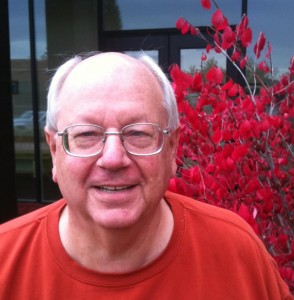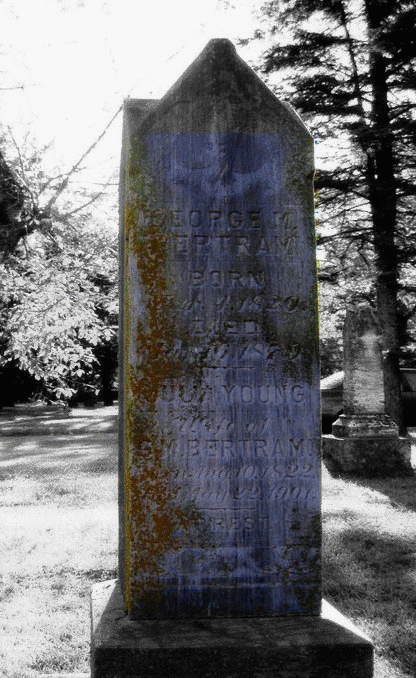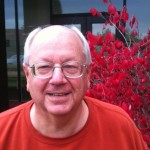Julia Young Bertram
Julia was the wife of George Bertram. They moved to the Monticello area in 1855 after spending a few years in the newly formed town of Excelsior, Minnesota. For a while she was the only white woman west of St. St.Anthony, Minnesota and was well thought of by the Sioux of the area.
In moving to Monticello in 1855, the only “roads” available were oxen trails that followed the paths of the natives of the area. Therefore, the only means of transportation was by wagon or on foot.
Julia and George were involved in the very early establishing of the town of Monticello, especially the faith community. The Congregational Church was born in their home with them both being charter members. It is interesting to note here that in most organizational listings of the time only men were listed.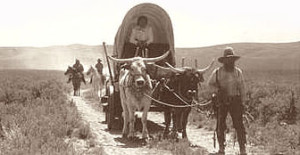
Julia’s life was always a busy one, whether in charitable endeavors, comforting the sick or aiding the needy, white or native.
Due to her husband’s business and busyness, she did the majority of the raising of their 5 children (3 boys and 2 girls) while still maintaining an active involvement in the community.
Julia outlived George by 22 years and upon her death was interred beside her husband at Riverside Cemetery. As a testament to her life, on the day of her funeral all the school and all the businesses were suspended in her memory.
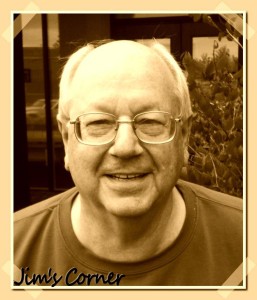 “The Big Woods”
“The Big Woods”
Most Minnesotans have heard of the term “The Big Woods” but what exactly does it mean? The term was originally the name given to the region by French explorers was le bois grand (which means Big Woods). This region covered most of south central Minnesota, a portion of western Wisconsin and a part of south central Minnesota. It also covered some of the area along the Mississippi and Minnesota Rivers. Most of the Big Woods was bordered on the west and south by the beginning of the Great Plains.
The Big Woods was dominated by American elm, basswood (linden), sugar maple, and red oak. The understory was composed of ironwood, green ash, aspen and birch. The entire area covered as much as 5,000 square miles (in a diagonal strip 100 miles long and 40 miles wide) and created a canopy that at times, blocked the sun and limited undergrowth.
A small part of the Big Woods is being preserved in pristine condition in Nerstrand – Big Woods State Park, which is located just east of Fairbault, Minnesota and there is a plaque commemorating the Big Wood located off Interstate 35 near Elko, Minnesota.
Wright County lies just off the northern edge of the region but some areas still bear the characteristics of the “Woods”. To see and experience what it may have been like one has only to visit Lake Maria State Park. But, there is also an area of the Bertram Lakes that still has the “feel” of the Big Woods and that is in the area between Bertram Lake and Long Lake. Walk the area, get off the trails and find the groves of ironwood, basswood and maple. You will love it!
So What Exactly is Marl?
After World War II, the United States was involved in a large construction project and the demand for cement and lime was very high. The Lehigh Cement Company bought up the land containing First Lake, Mud Lake, and Long Lakes of the Bertram Chain because they contained large amounts of “marl”. Technically, “marl” is a result of glaciations when lime (or calcium bicarbonate) leaches through the sandy soil of the area and dissolves into the ground water. During spring runoff, the water flows into the lakes and changes into insoluble mono carbonate which is precipitated to the lake bottom. After thousands of years these deposits have reached depths of 15 – 20 feet. Marl is very useful for agricultural lime and as a source for the manufacture of Portland cement.

The Lehigh Cement Plant was located at the north edge of Mud Lake and it was there for two specific reasons; 1.) It had access to County Road 39 and, 2.) the new dam on Otter Creek below Bertram could control the water levels of Long, Mud and First Lakes, thereby making the marl more accessible with lower water levels.
Because of the marl the water remains very clear and free of water “algae blooms” in the summer while inhibiting the growth of troublesome plants and limiting the production of organic matter.
A Mystery Solved
In an earlier “Tidbit” called “A Monument to the Man”, I mentioned that George Bertram’s grave was located at Riverside Cemetery. This is true but Riverside Cemetery was not created and dedicated until 1883 – 5 years after Bertram’s death. This was the discrepancy that created the mystery – until now.
Upon researching Hillside Cemetery, the old pioneer cemetery which is located on Highway 25 & 7th Street in Monticello (next to Perkins), I found that Plot 145 was held under the name of Bertram who died in 1878. After Riverside Cemetery was opened in 1885, the body was moved to it’s present site where it lies in rest beside the grave of his wife, Julia. The exact date of the transfer is unknown, Bertram’s wife, Julia, died in 1901.
Jim’s History Corner – Day Camp
The Northwest Branch of the Minneapolis YMCA, located in New Hope, has operated the Day Camp since 1952. It just finished its’ 60th year this past summer.
The Day Camp served children from the communities of Plymouth, Osseo, Robbinsdale, New Hope, Maple Grove, Brooklyn Park, Brooklyn Center as well as Monticello, St. Michael and Albertville.
Originally the camp was located on Rice Creek in Fridley, Minn. where it operated for many years.
It moved to the “Y” property at Monticello in 1973 after the YMCA finished purchasing the final block of land that comprises the current 1200 acres.
During the 80’s and 90’ as many as 375 children ages 5 – 12, attended the summer camps. Many were disadvantaged children from the cities area.
Camp activities included swimming, hiking, games, arts & crafts, horseback riding, cookouts, bonfires, story-telling, & singing all in an outdoor atmosphere of caring and sharing.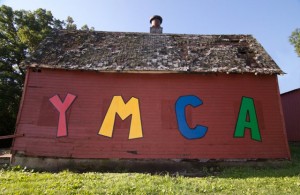
The “core” of the camp was moved to the north side of Lake Bertram in 2004 to be closer to the beach and to use the chalet as an office and safety area. Also, in 2004 a 400 seat capacity amphitheater was built by the Chalet by AmeriCorps, the Tree Trust, and YMCA volunteers including staff and the “Y’s” Men.
Many children from Monticello area attend the camp and many teenagers ended up being camp “counselors”. A story from one of these “counselors” will come later.
Jim’s History Corner – Camp Stories
Most of us have experienced sitting around a campfire with a group of people listening to stories on a varied number of topics. Some of these include stories of mystery, ghosts and murder.
Hatchet Harry was one of these stories. The Hatchet Harry story was born out of the YMCA Camp Maniteau before it ever moved to the Bertram Lakes area. (Earlier Tidbit) It is a story that has been embellished over a great number of years by a number of storytellers. Each addition usually can be attributed to some unexplained (or natural) occurrence that people have encountered at the camp.
One such adaptation has been the inclusion of the Black Cat to the story. Because there were 9 farmsteads that comprised the Bertram Lakes area, barn cats were a common occurrence and by coincidence many of  them were black. When Monticello High school programs used the Chalet it was not uncommon to have a black cat stop by for a visit or watched from the woods.
them were black. When Monticello High school programs used the Chalet it was not uncommon to have a black cat stop by for a visit or watched from the woods.
So, the next time you’re at the Park and you see a black cat, please remember it’s … just a story.
Jim’s History Corner – South East Asian Assistance Program
In the early 80’s a number of Asian refugee families from Laos, Cambodia and South Vietnam were re-settled in the Twin Cities region through the Southeast Asian Resettlement Assistance Program. For their involvement in this program, the YMCA of Minneapolis decided to set aside 5 acres of land at Camp Manitou as a garden for the raising of vegetables including corn. Ten to fifteen families of Hmong, Laotian and Cambodian descent worked the 5 acres of land for several years.
The 5 acres of land was located just west of the entrance to the southern boat landing on Bertram Lake and south of the horse barn. Currently the land has pine trees on it but in 1984 it was a cornfield. The land was divided among the 3 groups with seed corn and seeds from their native countries provided. Often Mike M. (camp director) was invited to lunch to sample the Asian cuisine. Some was very hot! 
Transportation to Camp Manitou was provided by the YMCA along with translators who would help the refugees with their English. Furthermore, coming out to the field during the weeks and weekends would give them something to do and it must be remembered that these were extended families with children involved. Aside from the garden, they also maintained a chicken coop for about 300 chickens to supplement their diet. Out of superstition, they preferred colored chicken to white chicken because they believed that white chicken would make you sick.
All in all it was an excellent program offered by the YMCA that provided the refugees with a few years to help make their transition to America easier.

